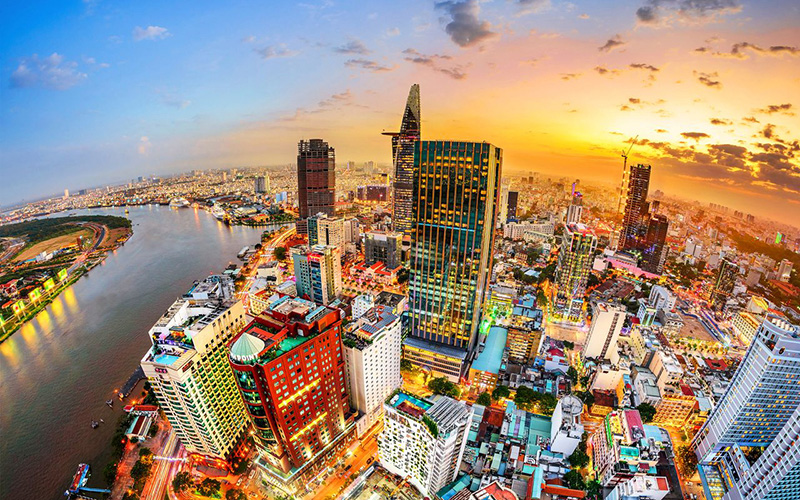
Vietnam’s manufacturing, retail and newly formed businesses posted positive growth in November, thanks to improved economic conditions according to the latest World Bank report.
The industrial production index in November rose 5.5% from the previous month. This robust recovery reflects in part a resurgence in economic activity in the southern regions, including HCMC (up 13.3% from October), according to the World Bank’s Macro-economic Monitoring Report in Vietnam.
After recovering in November, the industrial production index surpassed the level of a year ago. Food processing, tobacco, textiles and clothing, rubber and plastics and metals were the most dynamic sub-sectors, with double-digit annual growth rates.
Related: Doing business in Vietnam as foreign investors.
Domestic demand continued to rebound, with retail sales increasing by 6.2% month-on-month in November. However, retail sales are still 12.2% lower than in November 2020. Sales of services affected by social distancing measures recovered faster in the third quarter than sales of goods during the quarantine period (12.5% vs. 5.2% this month). per month).
However, both are below the level reported a year ago. The number of new formal enterprises in November increased by 45% month-on-month, the second increase since May.
The number of new registered companies also increased, but at a slower pace than their entry. More events have been resumed than those that were suspended. The overall improvement in the formal dynamics of the company revealed fewer delays in the formal registration of new companies and the closure of businesses caused by the pandemic.
The increase in net income can be attributed to improved economic conditions. Trade surplus reached $ 1.3 billion last month as commodity export growth increased from 6.1% y / y in October to 26.5% y / y in November, exceeding 24.1% growth in imports. The improvement in export performance could be attributed to a recovery in manufacturing, especially in the high-tech sectors.
Foreign direct investment (FDI) liabilities increased by 71.2% MoM in November after declining in October. This was mainly due to the recovery of investments in the manufacturing sector (+ 40.2% on a monthly basis).
From January to November, the country attracted promised foreign direct investment worth $ 26.5 billion, which is comparable to the amount announced for the same period in 2020. Foreign direct investment payments continued to recover after sharply declining in the third quarter (+ 4.3% MoM). basis in November), but has not yet reached the level observed a year ago.
After a two-month decline, the consumer price index (CPI) rose 0.3% m / m in November.This was partially reflected by an increase in transport costs (+ 3.1% m / m) due to higher fuel prices, recovery of domestic demand for non-food products and increasing logistics costs. Food prices continued to decline, dropping 0.2% MoM thanks to well-functioning food supply chains. Compared to last year, CPI rose 2.1% y / y, slightly higher than in October, but well below the 4% target set by the State Bank of Vietnam.
Also read: Things to know about doing business in Vietnam as a foreign investor
The budget surplus increased to VND 120.3 trillion (US $ 5.2 billion) in November, driven by an additional VND 45.4 trillion (US $ 2.0 billion) surplus. Total revenue is projected to rise 12.3% MoM and 33.4% YoY in November, partly reflecting the expiration of some corporate tax deferrals. Total spending increased by 9.4% YoY in November for the first time since April 2021, driven by accelerated public investment spending (over 150% YoY).
The World Bank has advised the Vietnamese government to continue to support private sectors to help restore the national economy and boost growth. “Providing support to affected workers and families would be an important way to achieve this goal,” the bank said.
Given the fiscal space available and the difficulties encountered in budget execution in 2021, the government could also consider revenue measures to support domestic demand. This could include a 2022 value added tax cut to support private consumption.














